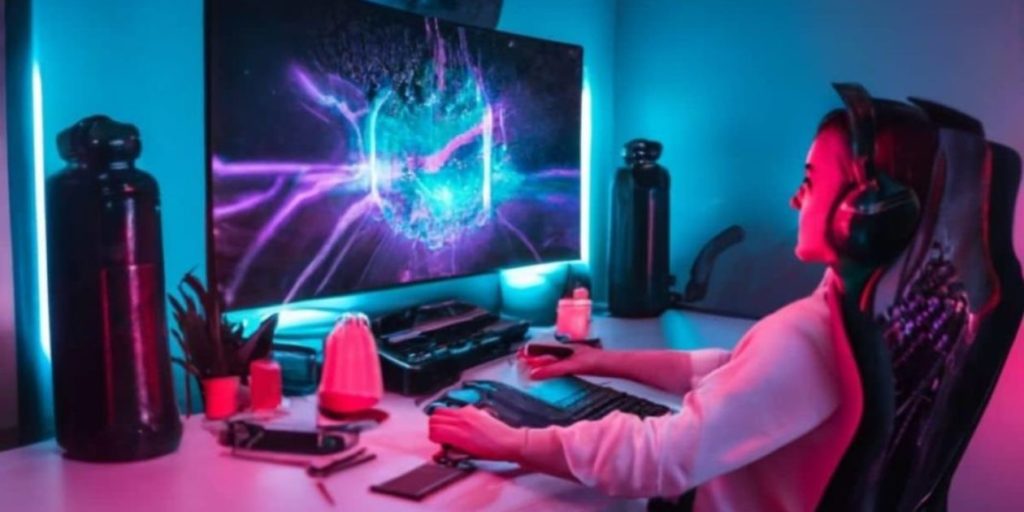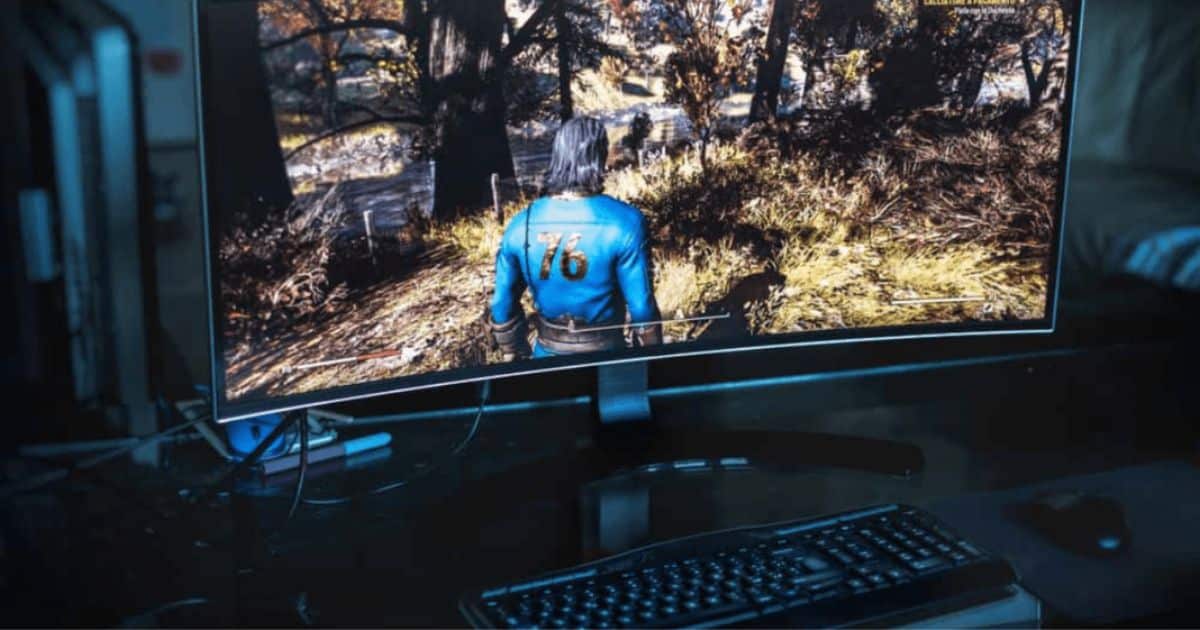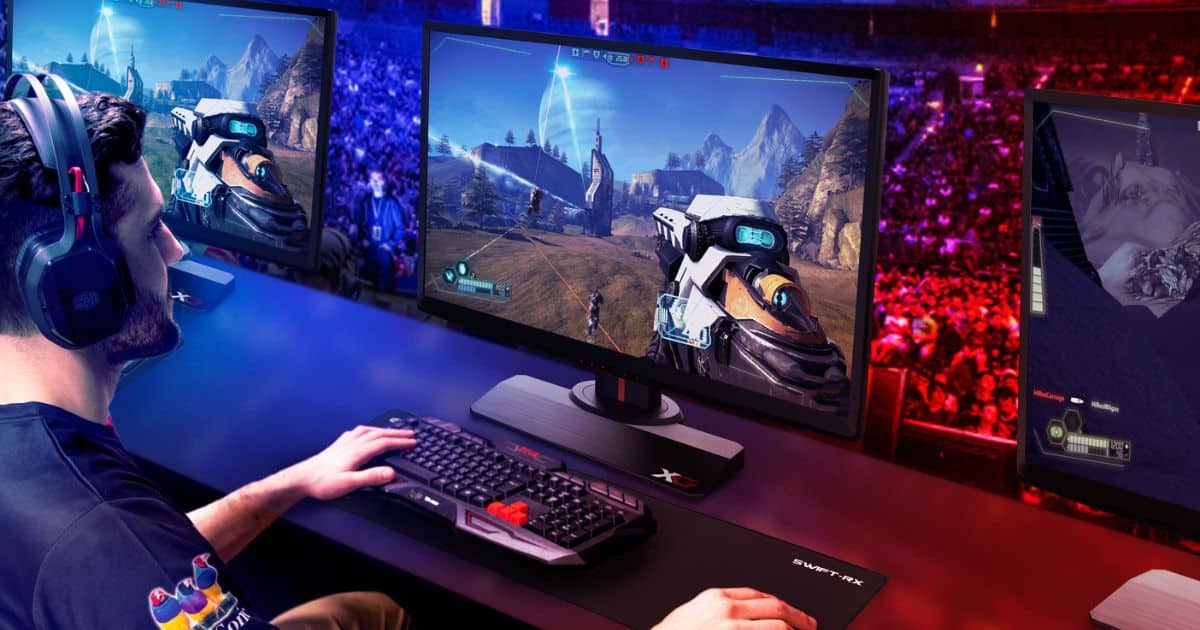In the world of gaming, every millisecond counts. The difference between victory and defeat can often hinge upon split-second reactions. That’s why choosing the best refresh rate for your gaming monitor is crucial. A higher refresh rate offers smoother motion, reducing blur and ghosting, and providing a more immersive gaming experience. But, is higher always better? In this article, we will delve into the intricacies of refresh rates, compare different options, and help you find the sweet spot that suits your gaming style.
Key Takeaways
- Higher refresh rates provide smoother motion and reduced motion blur, enhancing the visual clarity and overall gaming experience.
- Higher refresh rates reduce input lag, resulting in a more responsive and immediate gaming experience.
- The optimal refresh rate depends on hardware capabilities, game type, and personal preference.
- When choosing a gaming monitor, it is important to find the right balance between refresh rate and affordability, considering budget and needs.
Understanding Refresh Rate
Understanding refresh rate is crucial when selecting a gaming monitor that can deliver smooth and fluid gameplay. Refresh rate refers to the number of times per second that a monitor updates its display. It is measured in Hertz (Hz) and determines how many frames per second (FPS) can be displayed. A higher refresh rate means the monitor can refresh the image more times per second, resulting in smoother motion and reduced motion blur. This is especially important for fast-paced games where quick reaction times are crucial. Furthermore, higher refresh rates can also help reduce eye strain during long gaming sessions by minimizing flickering and providing a more comfortable viewing experience. Overall, a higher refresh rate offers significant benefits in terms of gameplay experience and visual comfort, making it an important consideration when choosing a gaming monitor.
The Impact of Refresh Rate on Gaming Performance
The refresh rate of a gaming monitor plays a crucial role in determining the overall gaming performance. A higher refresh rate, such as 144Hz or 240Hz, provides a more responsive gaming experience, reducing input lag and motion blur. Additionally, a higher refresh rate enhances visual clarity, allowing for smoother and more fluid gameplay.
Refresh Rate and Responsiveness
Optimizing the refresh rate of a gaming monitor significantly enhances the responsiveness, allowing gamers to swiftly react to in-game events. A higher refresh rate ensures smoother motion and reduces motion blur, ultimately providing a more immersive gaming experience. Here are three key benefits of optimizing the refresh rate:
- Reduced eye strain: A higher refresh rate, such as 144Hz or 240Hz, reduces eye strain by minimizing the flickering effect that occurs with lower refresh rates. This can help gamers play for longer periods without experiencing discomfort.
- Decreased input lag: A higher refresh rate also helps to reduce input lag, which is the delay between a player’s actions and the corresponding on-screen response. With a lower input lag, gamers can enjoy a more immediate and responsive gaming experience.
- Enhanced visual clarity: A higher refresh rate ensures that each frame is displayed more frequently, resulting in smoother visuals and improved clarity. This is especially beneficial in fast-paced games where quick reactions are essential.
Overall, optimizing the refresh rate of a gaming monitor is crucial for gamers who prioritize responsiveness, eye comfort, and overall gaming performance.
Refresh Rate and Visual Clarity
Higher refresh rates enhance visual clarity in gaming, ensuring smoother and more detailed images for a heightened gaming experience. A monitor’s refresh rate refers to the number of times the screen updates its image per second. The higher the refresh rate, the more frequently the image is refreshed, resulting in smoother motion and reduced motion blur. This is particularly important in fast-paced games where quick reactions are crucial. Additionally, higher refresh rates can also help reduce eye strain, as they minimize flickering and provide a more natural and comfortable viewing experience.
When comparing refresh rates, it is important to consider the options available. The most common refresh rates are 60Hz, 120Hz, and 144Hz. While 60Hz is the standard for most monitors, upgrading to 120Hz or 144Hz can significantly improve the gaming experience. The increased refresh rate allows for smoother gameplay, more fluid motion, and enhanced responsiveness. However, it is important to note that higher refresh rates may require more powerful hardware to fully utilize their potential. Overall, opting for a higher refresh rate can greatly enhance visual clarity and overall enjoyment in gaming.
Next, let’s delve into a detailed comparison of refresh rates: 60Hz vs 120Hz vs 144Hz.
Comparing Refresh Rates: 60Hz Vs 120Hz Vs 144Hz

When comparing refresh rates, such as 60Hz, 120Hz, and 144Hz, it is important to consider the impact on gaming performance. Higher refresh rates can provide smoother motion and reduce blur, enhancing the overall gaming experience. However, the optimal refresh rate ultimately depends on factors such as the hardware capabilities, the type of games being played, and personal preference.
Choosing Optimal Gaming Refresh Rate
The current discussion focuses on evaluating and comparing the performance of different gaming refresh rates, such as 60Hz, 120Hz, and 144Hz. When considering refresh rate optimization, it is important to understand the benefits of higher refresh rates. Here are three key aspects to consider:
- Smoothness: A higher refresh rate allows for smoother motion, reducing motion blur and improving overall visual clarity. Games appear more fluid and responsive, enhancing the gaming experience.
- Responsiveness: Higher refresh rates contribute to reduced input lag, allowing for quicker response times between the player’s actions and the on-screen display. This can give gamers a competitive edge in fast-paced games that require quick reflexes.
- Immersion: With a higher refresh rate, the level of immersion increases as the visuals become more lifelike and realistic. Higher refresh rates provide a more immersive and captivating gaming experience.
Considering these benefits, it is clear that higher refresh rates can greatly impact gaming performance.
Impact of Higher Refresh Rates
In evaluating the impact of higher refresh rates, it is crucial to compare different options such as 60Hz, 120Hz, and 144Hz, to determine the optimal choice for maximizing gaming performance. Higher refresh rates offer several benefits in competitive gaming. Firstly, they provide smoother and more fluid motion, which is essential for fast-paced games where every millisecond counts. This can give players a competitive edge by enhancing their reaction time and accuracy. Furthermore, higher refresh rates help reduce motion blur, which can be distracting and hinder gameplay. With faster refresh rates, each frame is displayed for a shorter duration, resulting in sharper images and less blurring during fast movements. Overall, a higher refresh rate, such as 120Hz or 144Hz, is highly recommended for competitive gaming as it enhances performance, provides smoother motion, and reduces motion blur, allowing gamers to fully immerse themselves in their gameplay experience.
Is Higher Always Better? Finding the Sweet Spot
Achieving optimal performance in gaming monitors involves striking a balance between refresh rate and visual quality, as simply cranking up the refresh rate may not always result in a better gaming experience. When it comes to finding the ideal refresh rate for a gaming monitor, it’s important to understand the limitations of higher refresh rates. Here are three key factors to consider:
- Compatibility: Not all games and graphics cards can support higher refresh rates. It is essential to ensure that your system is capable of handling the desired refresh rate before making any adjustments.
- Response time: Higher refresh rates require faster response times from the monitor. If the response time is not up to par, it can result in motion blur and ghosting, negating the benefits of a higher refresh rate.
- Cost: Monitors with higher refresh rates often come at a higher price. It is important to consider your budget and prioritize your needs to find the sweet spot between refresh rate and affordability.
Refresh Rate and Graphics Card Compatibility

Ideally, gamers should regularly assess their graphics card’s compatibility with the refresh rate of their gaming monitor to ensure optimal performance. Refresh rate refers to the number of times a monitor updates the image on the screen per second, while frame rate synchronization ensures that the graphics card and monitor are working together to deliver smooth gameplay. To help understand the relationship between refresh rate, frame rate synchronization, and input lag, the table below provides a comparison of different refresh rate options and their impact:
| Refresh Rate | Frame Rate Synchronization | Input Lag |
|---|---|---|
| 60Hz | Limited | Minimal |
| 144Hz | Improved | Reduced |
| 240Hz | Enhanced | Further reduced |
Overclocking Your Monitor: Pros and Cons
To maximize performance, gamers should carefully consider the pros and cons of overclocking their monitor, as it can potentially improve refresh rates but also pose risks to the monitor’s lifespan. Here are three key points to consider when deciding whether to overclock your gaming monitor:
- Pros of overclocking:
- Increased refresh rates: Overclocking can push your monitor beyond its factory-set limits, resulting in smoother and more fluid gameplay.
- Reduced motion blur: Higher refresh rates can minimize motion blur, allowing for clearer visuals during fast-paced gaming.
- Competitive advantage: A higher refresh rate can provide a competitive edge in fast-paced multiplayer games by reducing input lag and increasing responsiveness.
- Cons of overclocking:
- Reduced monitor lifespan: Overclocking puts additional stress on the monitor’s components, which can lead to a shorter lifespan.
- Potential image artifacts: Overclocking can introduce visual artifacts such as screen tearing or flickering if not done correctly.
- Voided warranty: Most manufacturers do not support or cover damages caused by overclocking, potentially voiding your warranty.
Choosing the Best Refresh Rate for Your Gaming Style
Gamers should carefully assess their gaming style and preferences in order to select the optimal refresh rate for their gaming monitor, ensuring a seamless and immersive gaming experience. With advancements in gaming monitor technology, higher refresh rates have become increasingly popular among gamers. Refresh rate refers to the number of times a monitor refreshes the displayed image per second, measured in Hertz (Hz). Traditional monitors typically have a refresh rate of 60Hz, but newer models offer refresh rates of 144Hz, 240Hz, and even higher. The benefits of higher refresh rates in gaming include smoother and more fluid motion, reduced motion blur, and improved responsiveness. Gamers who enjoy fast-paced action games or competitive online gaming may particularly benefit from higher refresh rates as it allows for quicker reaction times and enhanced visual clarity. Ultimately, the choice of refresh rate depends on individual gaming preferences and budget.
Conclusion
In conclusion, the best refresh rate for a gaming monitor depends on the individual’s gaming style and preferences. While higher refresh rates such as 120Hz or 144Hz can provide smoother gameplay and reduced motion blur, they may not be necessary for all gamers. It is important to consider the compatibility with your graphics card and the potential benefits and drawbacks of overclocking your monitor. Ultimately, finding the sweet spot that balances performance and visual quality is key for an optimal gaming experience.

Brook over 3 years of professional gaming, esports coaching, and gaming hardware reviews to provide insightful expertise across PC, console, and mobile gaming.










